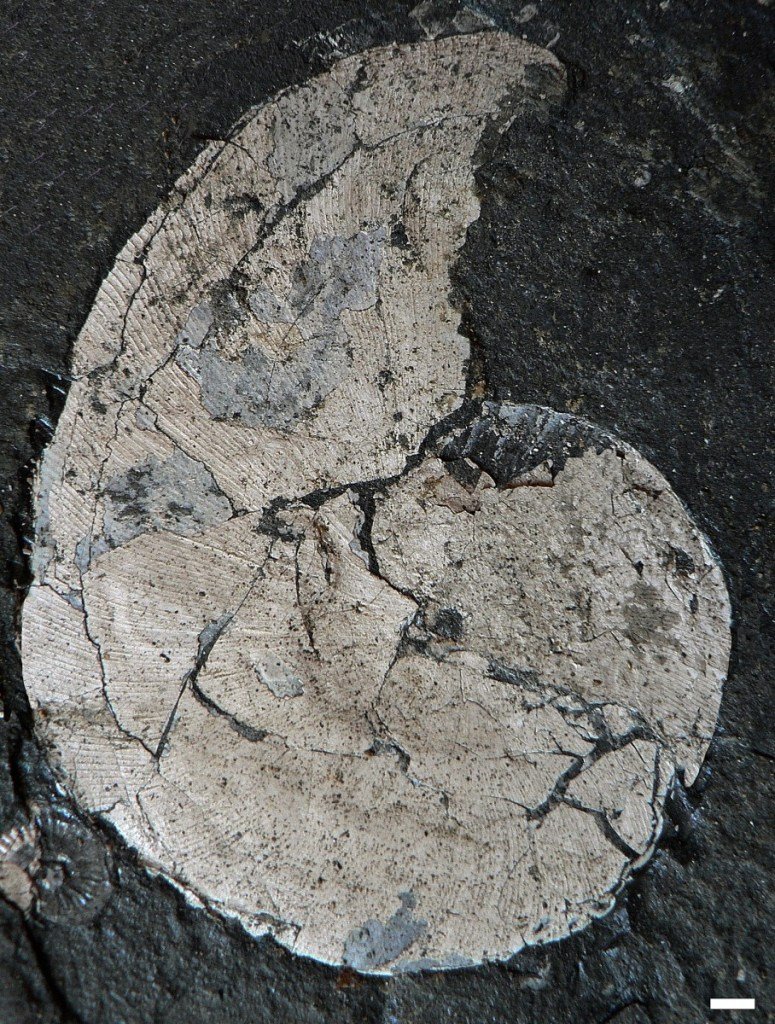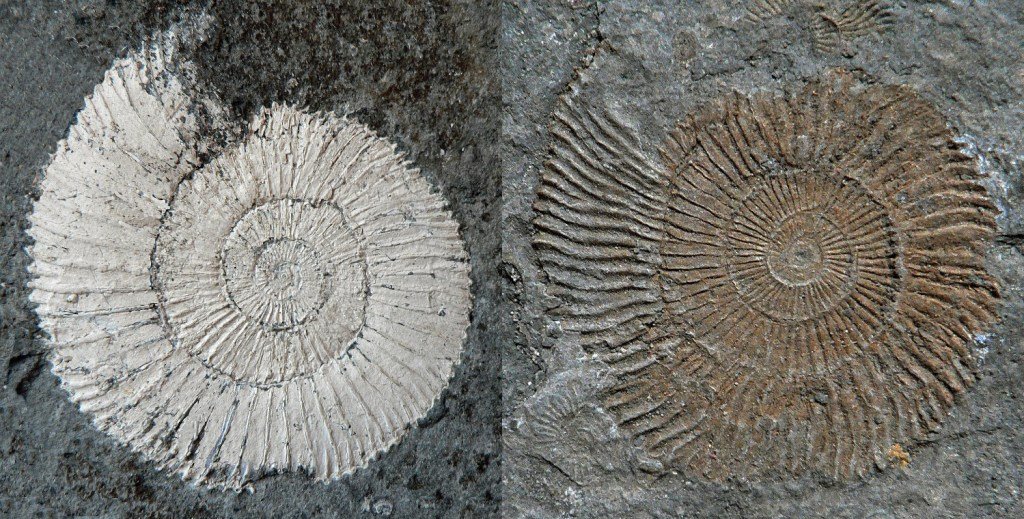Stephen Lautenschlager (Germany)
The Decrease Jurassic Posidonia Shale Formation of Southern Germany belongs to one of the well-known fossil lagerstätten on the earth. Its sediments – finely laminated marly claystones – had been deposited in a shallow, inland (epicontinental) sea, the Tethys Ocean, underneath tropical circumstances. The darkish gray color of those bituminous shales is a results of the excessive quantity of natural matter and kerogens, in addition to disseminated pyrite.
This means stagnant and anoxic (that’s, oxygen poor) circumstances, a minimum of close to the sediment floor, throughout the time of their deposition. This is able to have prevented exercise by organisms close to the seafloor and, due to this fact, predation and scavenging on lifeless animals and carcasses. Because of this, the fossils of the Posidonia Shales are exceptionally effectively preserved. Vertebrate fossils, equivalent to ichthyosaurs and marine crocodiles, are world-renowned for his or her element and the outstanding preservation of sentimental tissue. Nevertheless, invertebrate fossils, together with numerous ammonites, belemnites and huge colonies of crinoids, are additionally plentiful in these sediments and of equally outstanding preservation.
In October 2007, my crew and I had been granted permission to excavate and pattern a decommissioned quarry on the base of the Hesselberg. This remoted hill or butte is situated on the border between Bavaria and Baden-Wuerttemberg (Fig. 1) and an entire succession from the Decrease Jurassic (Pliensbachian) to the Higher Jurassic (Kimmeridgian) is preserved right here.

The Hesselberg quarry (Fig. 2) has been identified for practically 100 years, however it has been scientifically uncared for and our goal was to take a fine-scale, stratigraphic part of the Toarcian sediments, which turned out to be a 10m-thick sequence of bituminous shales from the Posidonia Shale Formation. As we had accomplished biostratigraphical sectioning in these sediments throughout Southern Germany earlier than, we had been anticipating the ‘typical’ assemblage of invertebrate fossils, consisting primarily of ammonites and belemnites, and the occasional bone fragment or remoted bones.

Nevertheless, what we really discovered was very untypical and fairly outstanding. Once we reached the unweathered components of the marly claystones, roughly half a meter beneath the highest, we discovered layers with quite a few ammonites with shining white shells. Cephalopods, significantly ammonites, possess shells consisting of two layers of aragonite, an inner nacreous (‘mother of pearl’) layer and an outer prismatic layer, which consist of densely packed, parallel calcite crystals.
The outermost part is covered by a thin organic coat called a periostracum, which protects the actual shell. Usually, the ammonites from the Posidonia Shale Formation are preserved as flattened impressions with the calcareous part of the shell dissolved. The only part that remains is the organic periostracum, with a greyish brown colour (see box). However, in this case, the ammonites still possess their original aragonitic shell, most of them also shining in the iridescent colours of the still-preserved remains of the nacreous layer. Nevertheless, these specimens were also flattened by the high compaction rate of approximately 1 : 10 during the diagenesis of the clayey sediment. Therefore, the remaining shell is only some 100 micrometers thick and very delicate.
Throughout the whole section, these ammonites continued to be frequent. In some layers, we counted more than 100 individuals per square meter, sometimes overlaying each other in dense accumulations. However, we also found several distinct layers with only juvenile specimens and pockets of ammonite spawn, also preserved with opalescent white shells. These assemblages were mostly arranged in discrete regions, which indicates that they had been orientated by weak currents (Fig. 3).

The adult specimens rarely showed any pattern of distribution and generally seemed unaffected by these currents.
After one week of digging, we had sectioned more than nine meters of bituminous shales from the Posidonia Shale Formation with an accuracy of ±1cm and collected over 300 samples and slabs. This was only possible by the generosity of a local gravel plant owner. Seeing the misery caused by digging manually, he spontaneously provided us with a hydraulic shovel, for which we were very grateful!
The detailed biostratigraphical analysis revealed afterwards that the most common ammonite species found in the sampled section were Dactylioceras commune (Fig. 4) and Dactylioceras athleticum.

They are accompanied by Hildoceratid forms such as Pseudolioceras lythense (Fig. 5), Hildoceras sublevisoni (Fig. 6) and Harpoceras falciferum, as well as Harpoceratid and Dactylioceratid juveniles and brood.


Large specimens, for example, Phylloceras heterophyllum (Fig. 7), generally tended to be rare. Belemnites, usually common in the Posidonia Shales, are nearly absent.

However, some layers contained accumulations of the bivalve Unicardium bollense (Fig. 8), also preserved with the white aragonitic shell.

The faunal composition tells us that the whole sequence comprises only the upper part of the Posidonia Shale Formation and of the Lower Toarcian, and that it has been deposited in a comparably short time of a half million to a million years.
A question of preservation
This special type of preservation (Fig. 9) is, so far, only observed at the Hesselberg quarry and a single borehole less than 2km from the quarry. In all other outcrops and boreholes in Southern Germany, the fossils are ‘normally’ preserved. We do not know yet, what conditions led to the preservation of the aragonitic shell. Similar white ‘aragonitic’ ammonites are known from the Upper Jurassic Kimmeridge Clay of southern England, also embedded in a marly claystone.

A possible explanation could be that this fine-grained and consolidated sediment prevented the circulation of dissolving fluids. The great thickness of more than 9m of the Posidonia Shales in this region, and the short amount of time in which these sediments have been deposited, support this assumption. However, there must be other factors to be taken into account, as several equally thick sections are known from other quarries in the region, which lack this kind of aragonitic preservation.
The palaeoecological study of the collected material suggests that the Hesselberg region was apparently a calm area of the ocean with only gentle currents. The latter were only strong enough to have an effect on the small and juvenile specimens, whereas bigger ammonites were not affected. At the same time, the deposition of sediments happened unhindered, so that a thick section could be deposited despite the generally low deposition rates known for the Posidonia Shales. Therefore, the region may have served as a nesting ground for ammonites, as suggested by the high percentage of juvenile specimens and brood.
Although the lithology and the fossils of the Posidonia Shale Formation seem to be uniform at a cursory glance, each quarry and sampled section reveal new insights and findings. So, my colleagues and I will continue to probe these sediments in the hope of shedding more light on their fauna, ecology and development.
About the author
At the time of writing, Stephan Lautenschlager worked as a research assistant at the Department of Palaeontology at the University of Munich, focusing mainly on Triassic and Jurassic reptiles, but also on the biostratigraphical and facial investigations of the Posidonia Shale Formation.
Further reading
Hauff, B. (1921): Untersuchung der Fossilfundstätten von Holzmaden im posidonienschiefer des oberen Lias Württembergs. Palaeontographica, 64, 1-42.
Kaufman, E.G. (1979): Benthic environments and paleoecology of the Posidonienschiefer (Toarcian). Neues Jahrbuch für Geologie und Paläontologie, Abhandlungen, 157, 18-36.
Oschmann, W. (1995): The Posidonia Shales (Toarc, Lower Jurassic) in SW-Germany. Europal, 8, 44-53.
Selden, P. & Nudds, J. (2004): Holzmaden. Pp. 79-87. In Evolution of Fossil Ecosystems. Manson Publishing Ltd.
Trending Products










